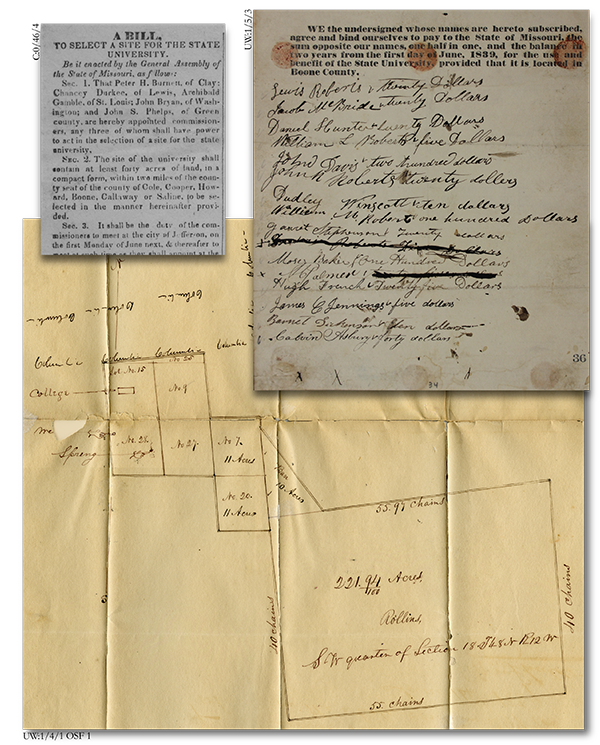
The year 1839 put the University of Missouri on the map, figuratively and literally. The Missouri General Assembly passed the Emmons Bill and the Geyer Act in early February and they established both a method "to select a site for the state university" and a mechanism "to provide for the institution and support of a state university...."
 At least "forty acres of land, in compact form, within two miles of the county seat of the county of Cole, Cooper, Howard, Boone, Callaway or Saline" and additional money raised through individual subscriptions were needed for a location to be chosen. Subscriptions of more than $82,000 and land valued at $36,000 gained Columbia the site for the state university.
At least "forty acres of land, in compact form, within two miles of the county seat of the county of Cole, Cooper, Howard, Boone, Callaway or Saline" and additional money raised through individual subscriptions were needed for a location to be chosen. Subscriptions of more than $82,000 and land valued at $36,000 gained Columbia the site for the state university.
The page from the subscription list gives an idea of the range of amounts pledged. Based on the lined-out names, the list may also have been used to do some basic accounting.
Lots 9 and 27 of the land promised for the university site are where the main campus buildings were built. The Rollins's acres would become the University's agricultural farms.
The Board of Curators of the State University, established as the governing body by the Geyer Act, solicited proposals late in 1839 to build its "principal Edifice" following the design of Stephen Hills, an architect who was completing work on the capitol in Jefferson City at that time. The successful bid of $74,494 was tendered January 1st, 1840, by Judson Clement, George Dorr Foot, and Phineas Kenyon.
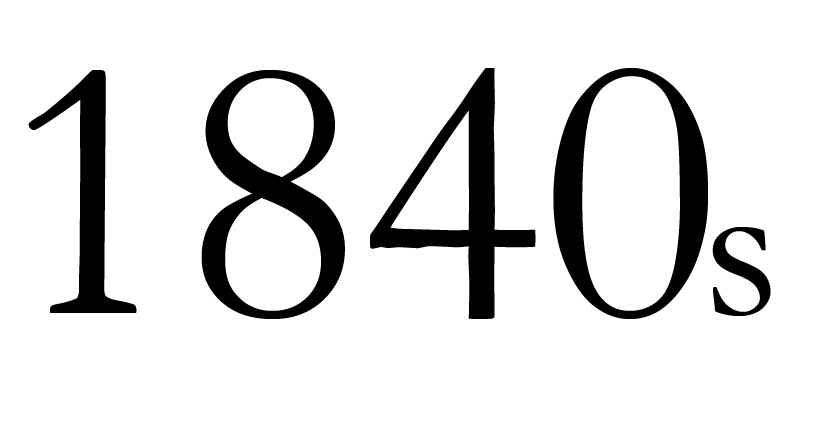 Clement and Foot built the 1839 Polk County Court House in Pittsfield, Illinois. A reference supplied to the University called them "first rate mechanicks, industrious and persevering...."
Clement and Foot built the 1839 Polk County Court House in Pittsfield, Illinois. A reference supplied to the University called them "first rate mechanicks, industrious and persevering...."
The letter from Foot to his mother back in Pittsfield reports on the construction in Columbia: "we have got the wings of the University up and are busy putting the roof on. I am in hopes that we shall be able to get the building completed whith in our contract and make something for our work."
The tintype shows George Foot around the year 1865.
The University Edifice was dedicated in 1843. The six columns of the building's portico are still standing on the Quadrangle today.
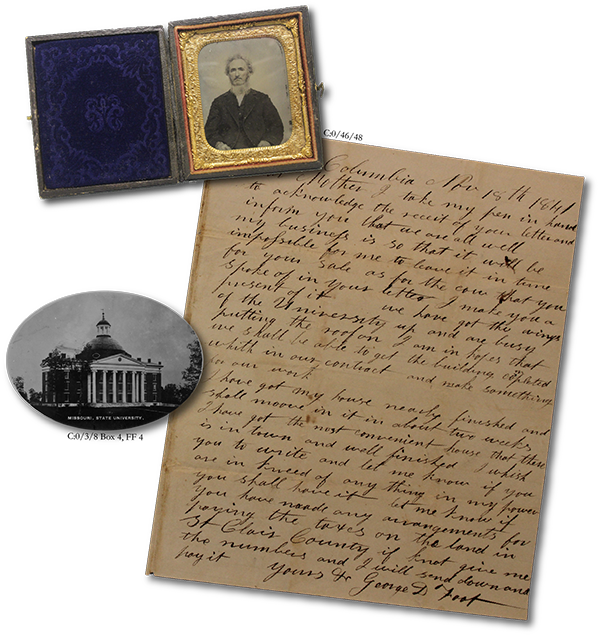
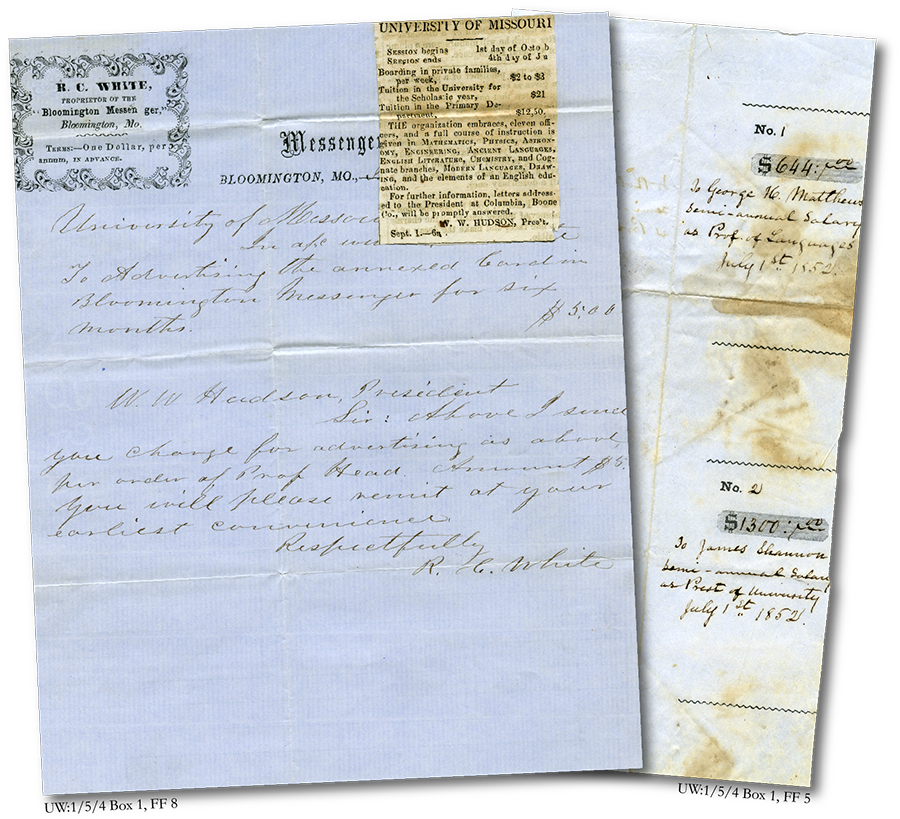
During the early decades of the University, the Board of Curators was involved with nearly all aspects of the institution's business, from building construction to classroom equipment, from salaries to the cost for fencing the grounds.
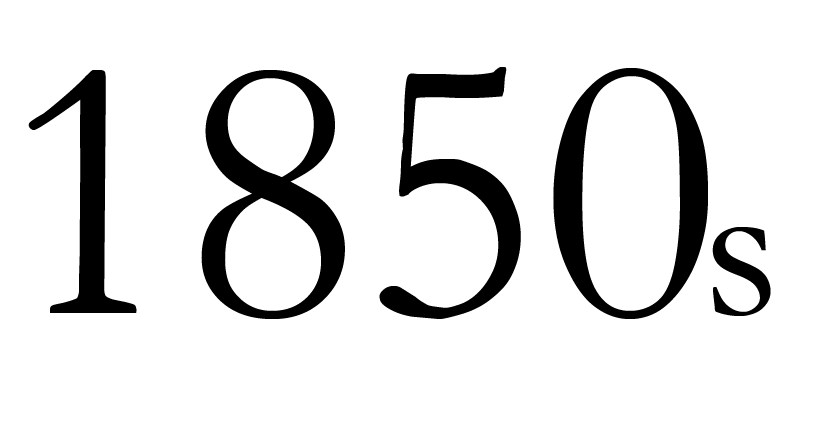 The University advertised in newspapers in Missouri and across the nation. This advertisement is from the Bloomington Messenger. The paper's co-founder Rufus White sent the invoice for an advertisement run of six months to University President William Hudson in January of 1858.
The University advertised in newspapers in Missouri and across the nation. This advertisement is from the Bloomington Messenger. The paper's co-founder Rufus White sent the invoice for an advertisement run of six months to University President William Hudson in January of 1858.
An 1852 resolution of the Board of Curators set three tiers of annual salaries: $2,000 for the president, $1,000 for a professor, and $600 for a tutor (a position in line with the later rank of instructor). In addition, all tuition fees received from students in excess of $1,680 were to be divided among the three ranks "so that the tutors shall receive only three fifths of the amount received by the President and Professors."
The stubs of a receipt book show the amounts received by Professor of Ancient Languages George Matthews and University President James Shannon for six months of service.
In February of 1862 Major General Henry W. Halleck of the Union Army issued Order No. 29 requiring the president, professors, curators and other officers of the University of Missouri to "take and subscribe to the oath of allegiance" as prescribed at the Missouri State Convention held in October of 1861.
 The note from University President Benjamin Blake Minor affirming his oath coincides with the meeting of the Board of Curators that resulted in the suspension of university operations due to Federal troop occupation of campus. Minor had assumed the teaching load of Edward J. Fristoe, Professor of Mathematics, who had "abandoned the duties" to join the Southern Army a few weeks after the order. Fristoe later successfully sued the University for back-pay suggesting his "firm Southern sympathies" as one of the reasons he was initially hired.
The note from University President Benjamin Blake Minor affirming his oath coincides with the meeting of the Board of Curators that resulted in the suspension of university operations due to Federal troop occupation of campus. Minor had assumed the teaching load of Edward J. Fristoe, Professor of Mathematics, who had "abandoned the duties" to join the Southern Army a few weeks after the order. Fristoe later successfully sued the University for back-pay suggesting his "firm Southern sympathies" as one of the reasons he was initially hired.
Passage of the Morrill Act in July of 1862 presented an opportunity to establish a federally funded college and encouraged the curators to reopen the University. Curators who had not taken the oath were replaced. The University resumed operations in November of 1862.
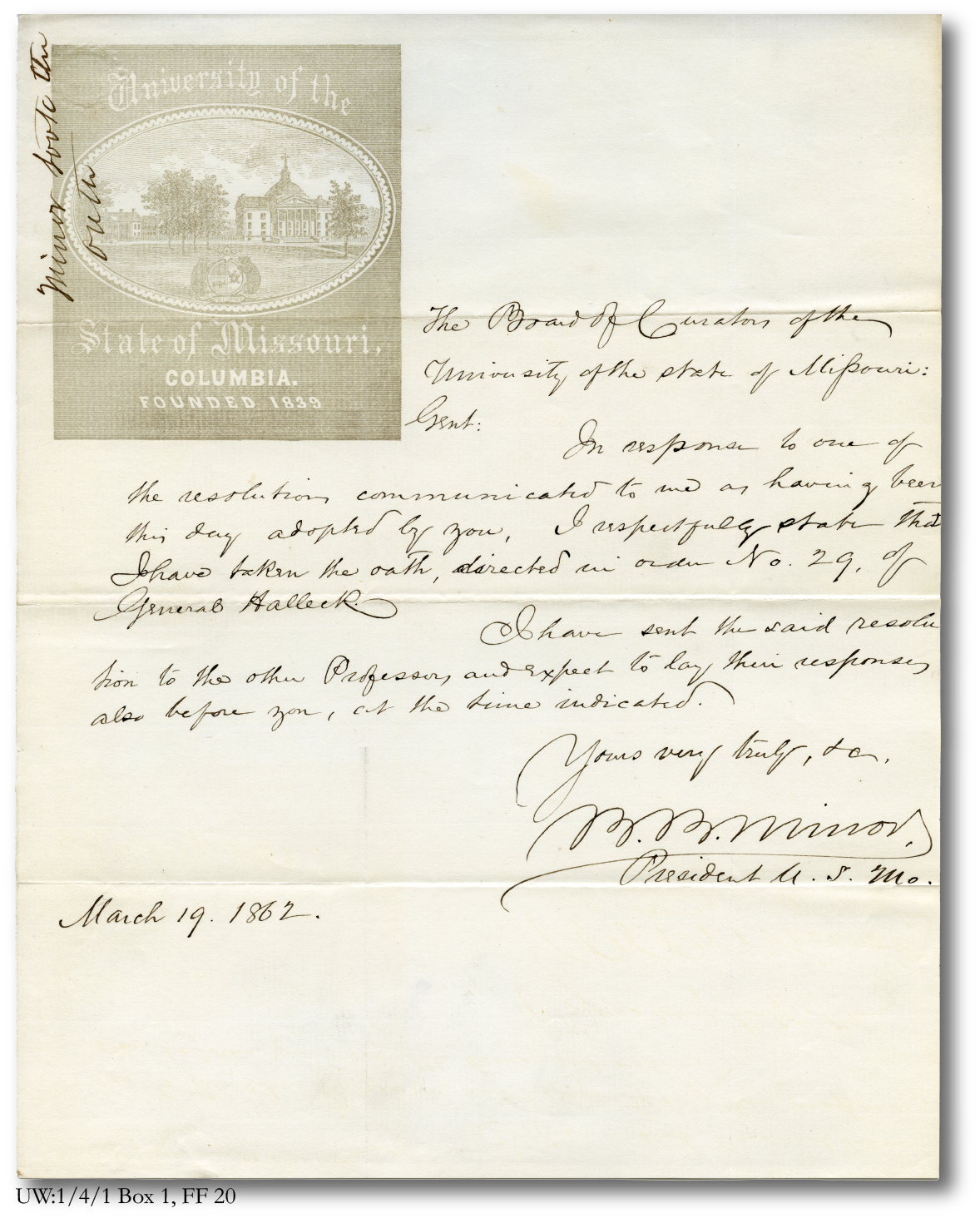
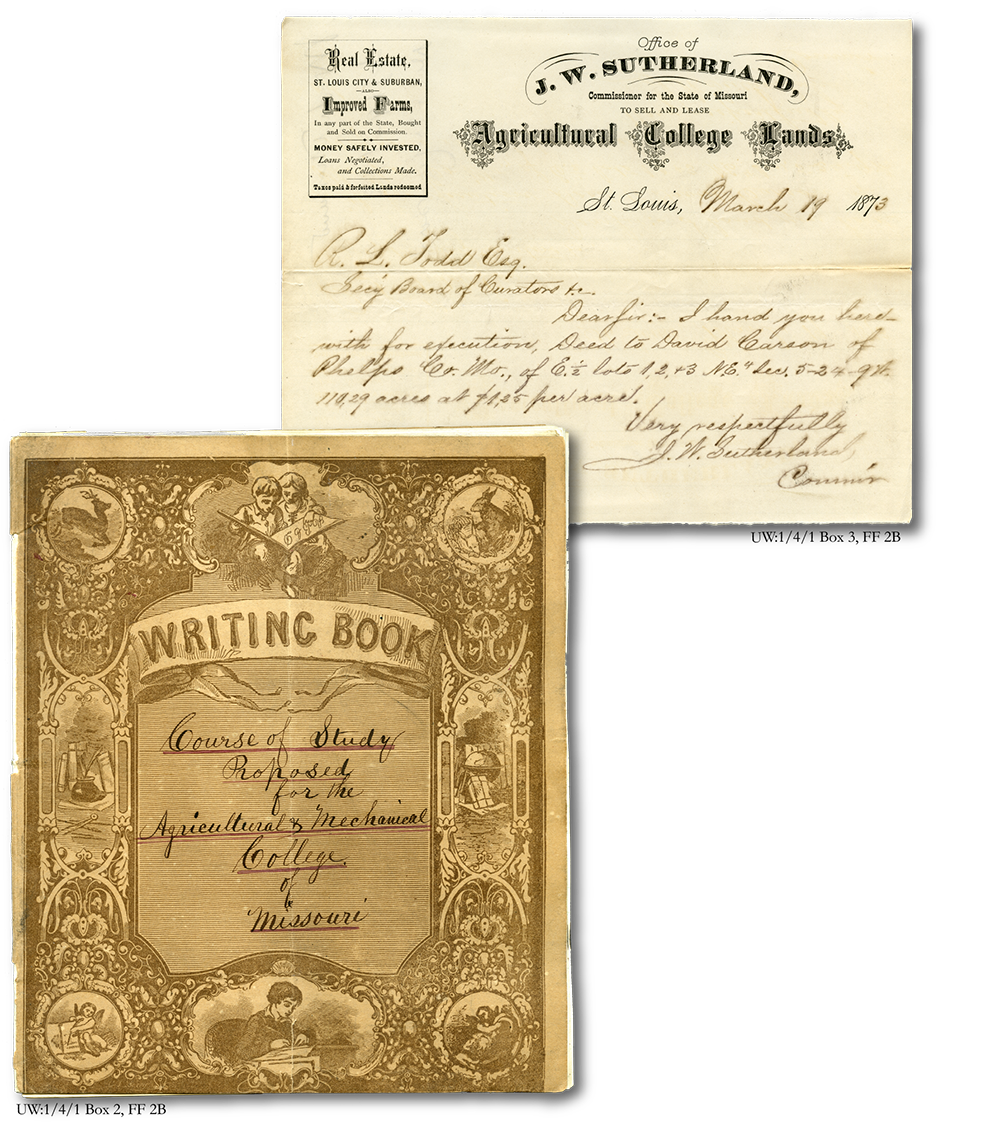
The University Board of Curators' correspondence from 1870 contains this booklet outlining admission standards and coursework requirements for a proposed land grant college. Areas of study with detailed descriptions include "Blacksmith's Shop, Climatology, Veterinary Surgery and Medicine, and the Anatomy, Physiology and Hygene of Man."
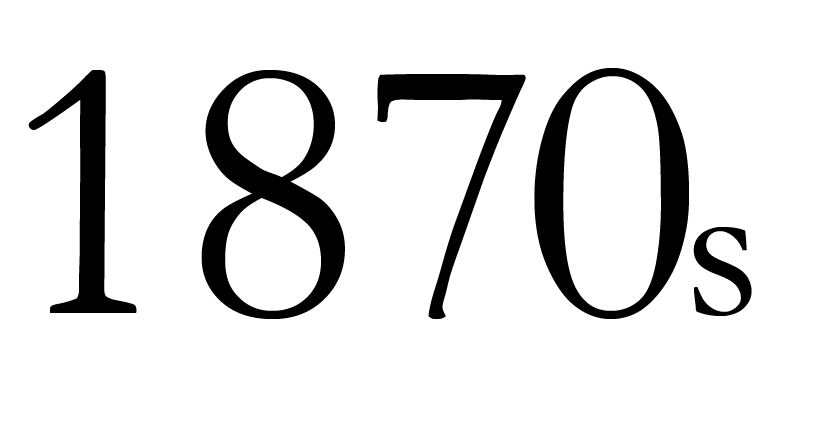 The Morrill Act endowment of 330,000 acres and its estimated value of $366,480 created a protracted debate regarding a location for the college. The House bill locating the College of Agriculture with the University at Columbia and an amendment directing one fourth of the funds to establish a school of mines and metallurgy in Rolla was signed by Governor Joseph W. McClurg on February 24, 1870.
The Morrill Act endowment of 330,000 acres and its estimated value of $366,480 created a protracted debate regarding a location for the college. The House bill locating the College of Agriculture with the University at Columbia and an amendment directing one fourth of the funds to establish a school of mines and metallurgy in Rolla was signed by Governor Joseph W. McClurg on February 24, 1870.
In May of 1870 John W. Sutherland resigned from the Board of Curators and was elected its commissioner to administer the sale and lease of the college lands. The lands were exempt from state and county taxes until 1882, or so long as held under lease. The Morrill Act explicitly prohibited use of the resulting funds for "purchase, erection, preservation, or repair of any building or buildings."
By the end of the 1880s, enrollment in the University had increased significantly since its ebb during the Civil War. In 1889, 580 students attended the University's Academic or Professional Schools. Nearly a quarter of the students were part of the Preparatory School which offered two years of course work at the "first class" and "sub-freshman class" levels prior to placement into the freshman class by examination.
 Efforts during this period by the University sought to incorporate university preparatory work into Missouri high schools and academies. By 1895 all preparatory work in the University proper was dropped.
Efforts during this period by the University sought to incorporate university preparatory work into Missouri high schools and academies. By 1895 all preparatory work in the University proper was dropped.
The Academic School offered degrees in three curricula: an Artium Baccalaureus (A.B.) in the traditional Classical curriculum, a Literarum Baccalaureus (L.B.) in the Literary curriculum, and a Scientiarum Baccalaureus (S.B.) in the Scientific curriculum. The University's catalog for 1888-1889 lays out a four-year plan of courses for each degree. Each Professional School offered its own degrees with varying years of course work. A Master degree was "conferred three years or more after graduation, upon such Bachelors as pursue a professional or literary career."
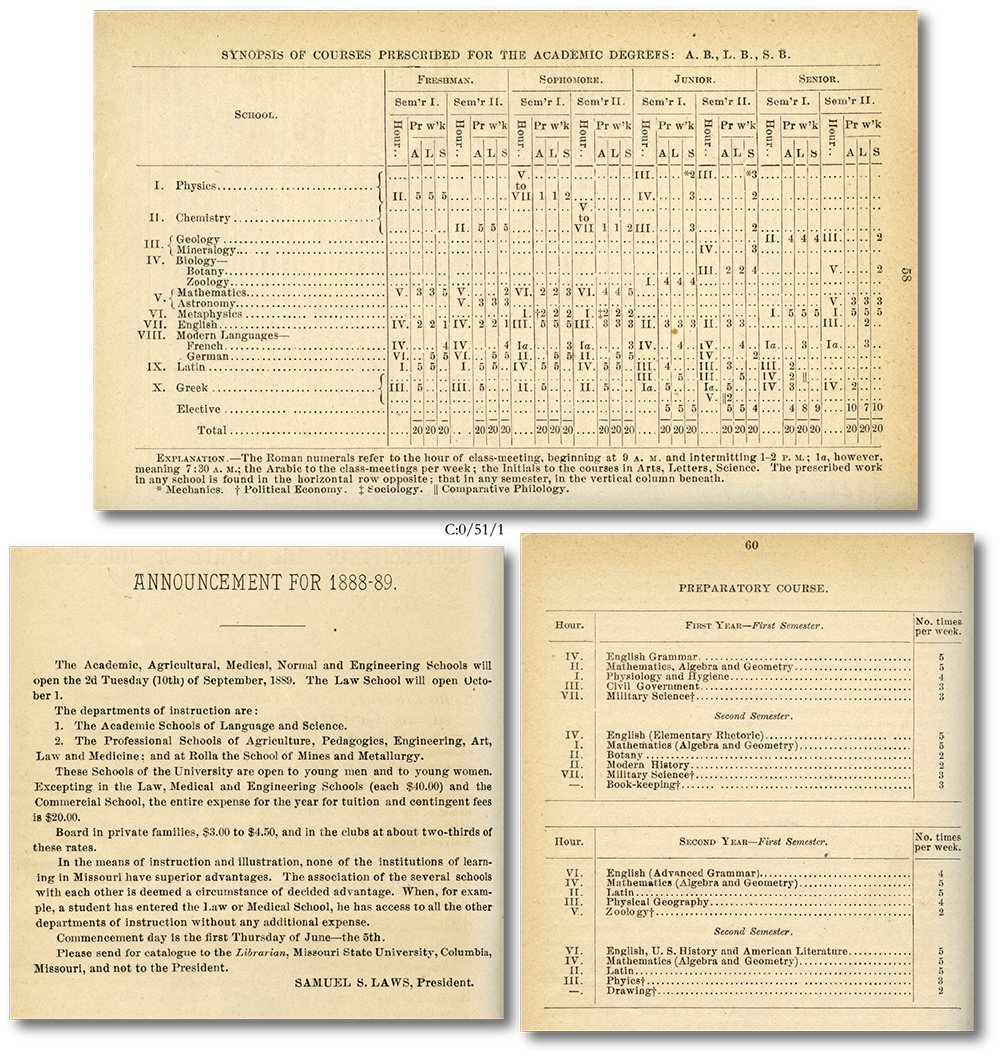
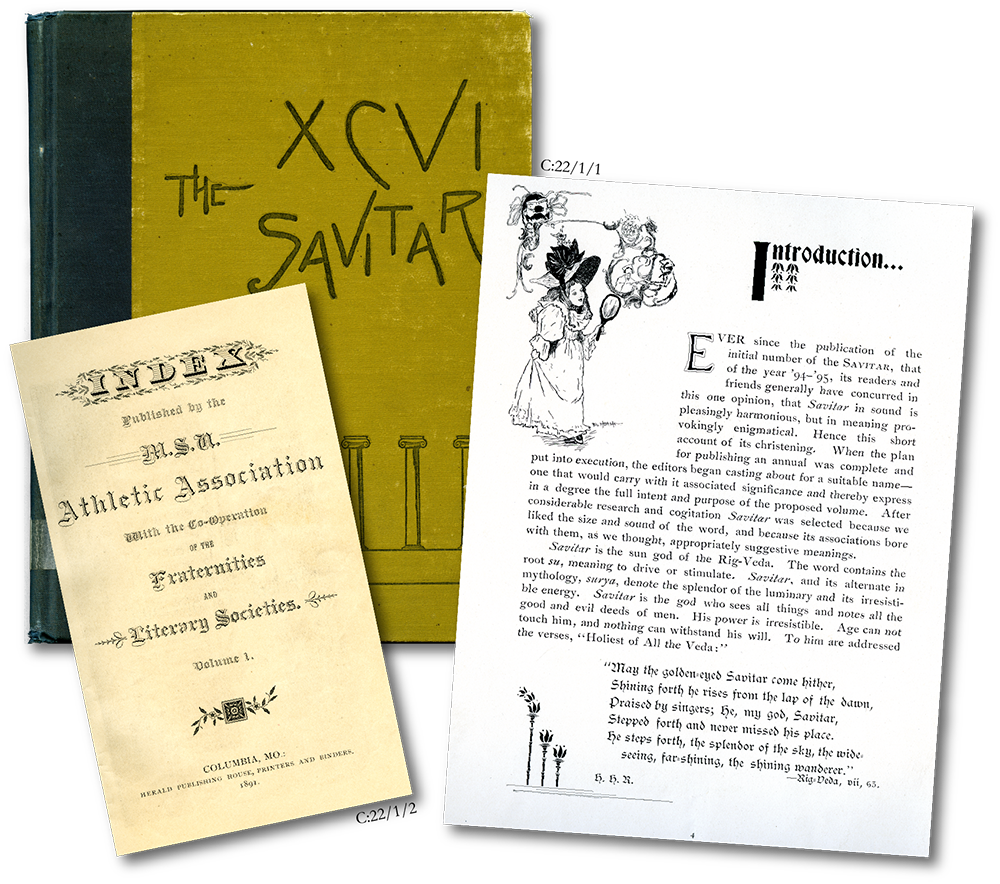
The University's first yearbook was published in conjunction with the establishment of a student athletic association. A student "Foot Ball Association" had been created in 1890, and a surplus of over one hundred dollars from its inaugural season was turned over to the University for the purpose of establishing a general athletic association. The earliest football practices and scrimmages took place on the lot where Ellis Library now stands.
 The yearbook returned as the Savitar in 1894 with editorial responsibilities assumed by the Junior Class. In 1901 improvements in binding, paper, and type raised the price of the annual to $1.25. The 352-page, 2003 edition priced at $35 was the last in the large format. The following year the Savitar appeared as a 96-page, magazine-style yearbook. Publication ceased after the Missouri Student Association Senate passed a bill removing student fee funding for the publication in 2005.
The yearbook returned as the Savitar in 1894 with editorial responsibilities assumed by the Junior Class. In 1901 improvements in binding, paper, and type raised the price of the annual to $1.25. The 352-page, 2003 edition priced at $35 was the last in the large format. The following year the Savitar appeared as a 96-page, magazine-style yearbook. Publication ceased after the Missouri Student Association Senate passed a bill removing student fee funding for the publication in 2005.
The 1898 edition of the yearbook provides an explanation for the annual's "pleasingly harmonious" name. University catalogs from the early 1890s include a Department of Sanskrit with Funeral Hymns of the Rigveda and Brahmanas listed as readings.


